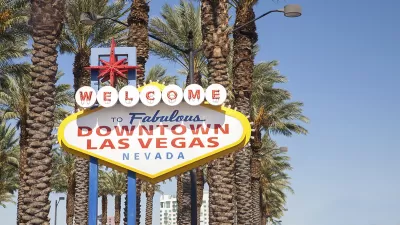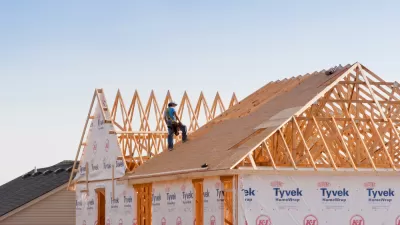Victorville, CA is a textbook case of the housing bubble gone wrong. Moving forward, Warren Karlenzig argues that places like Victorville show the need to consider a new paradigm of density and efficiency moving forward.
Karlenzig writes, "Victorville, California [is] a virtually 100 percent auto-dependent city of 107,000 that grew from 64,000 in 2000. Real estate prices started to crash in this Mojave desert community in 2006 when gas hit $2 a gallon. Victorville is now one of the foreclosure capitals of the nation, as home prices fell from an average of well over $325,000 in 2007 to under $125,000 in 2009."
"Victorville is by no means an isolated example. The amount of suburban and exurban development that occurred in the 1990s and early 2000s when fuel prices hit their historic low prices (see graph below) has created a massive expanse of excess houses and infrastructure requiring untold resources."
FULL STORY: Death of Sprawl, Part 2: How Exurban Meltdown helped bring down the US Economy

Planetizen Federal Action Tracker
A weekly monitor of how Trump’s orders and actions are impacting planners and planning in America.

Chicago’s Ghost Rails
Just beneath the surface of the modern city lie the remnants of its expansive early 20th-century streetcar system.

San Antonio and Austin are Fusing Into one Massive Megaregion
The region spanning the two central Texas cities is growing fast, posing challenges for local infrastructure and water supplies.

Since Zion's Shuttles Went Electric “The Smog is Gone”
Visitors to Zion National Park can enjoy the canyon via the nation’s first fully electric park shuttle system.

Trump Distributing DOT Safety Funds at 1/10 Rate of Biden
Funds for Safe Streets and other transportation safety and equity programs are being held up by administrative reviews and conflicts with the Trump administration’s priorities.

German Cities Subsidize Taxis for Women Amid Wave of Violence
Free or low-cost taxi rides can help women navigate cities more safely, but critics say the programs don't address the root causes of violence against women.
Urban Design for Planners 1: Software Tools
This six-course series explores essential urban design concepts using open source software and equips planners with the tools they need to participate fully in the urban design process.
Planning for Universal Design
Learn the tools for implementing Universal Design in planning regulations.
planning NEXT
Appalachian Highlands Housing Partners
Mpact (founded as Rail~Volution)
City of Camden Redevelopment Agency
City of Astoria
City of Portland
City of Laramie





























